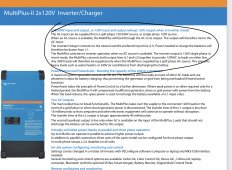Just understand what "MTBF" means.
This does not mean that if you operated 100 inverters, average operating life would be 21.5 years.
It means that if you operated 215 inverters, 10 would be expected to have failed within 1 year.
They may in fact last an average of 21.5 years, or they may not.
MTBF tells about failure rate, not expected lifespan.
There is a "bathtub curve", with some infant mortality, low failure rate during operating life, increasing failure rate toward end of life due to wear-out.
Operating 5x SWR 2500U GT inverters (about 12 operating hours per day), I had one failure during 5 year warranty, repaired by replacement PCB. I had one failure outside of warranty and took it out of service (maybe at 10 years). At 17 years I took the remaining ones out of service to replace with others having different features.
I calculated that was 35 years MTBF. If I had continued operating them, MTBF would have increased until the next failure. If they started dropping like flies, it would have decreased to < 17 years, I think 6 failures in as little as 17 x 4 + 10 operating years would have been 13 years MTBF.
MTBF is usually given in hours.
35 years at 12 hours per day is 153,000 hours MTBF
13 years is 57,000 hours MTBF
SMA now gives 10 year warranty standard for residential GT PV inverters, 20 year optional.
10 year warranty on Sunny Island battery inverters (which operate 24/7)
10 year on commercial inverters.
The GT PV inverter warranty also says "or XXXX kWh, whichever comes first."
Looks to me like single orientation of PV array, usual upside down parabola for production, the warranty by years would apply. Tracker or otherwise producing high power throughout the day, warranty is shortened accordingly.




